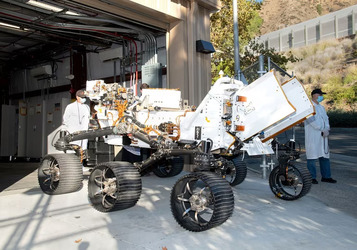The week's pick
Random Articles
Reseach Article
Energy Efficient TRDMA over Multipath Channels
| Communications on Applied Electronics |
| Foundation of Computer Science (FCS), NY, USA |
| Volume 2 - Number 7 |
| Year of Publication: 2015 |
| Authors: Kavya T.S., Sunil Jacob |
 10.5120/cae2015651797
10.5120/cae2015651797
|
Kavya T.S., Sunil Jacob . Energy Efficient TRDMA over Multipath Channels. Communications on Applied Electronics. 2, 7 ( August 2015), 6-11. DOI=10.5120/cae2015651797
Abstract
In recent years, there is an enormous growth in high speed wireless users. Multipath propagation is the transmission of wireless signals from the sender to the receiver through different paths. And these paths are of dissimilar lengths and this result in dissimilar versions of signals reaching at the receiver at dissimilar times. This results in inter-symbol interference by spreading to nearby symbols. Time Reversal Division Multiple Access (TRDMA) is a wireless channel access method which is both energy efficient and low complex is discussed in this paper. TRDMA uses multipath effect to solve the cumbersome issue of inter-symbol interference (ISI). In this technique, energy is concentrated in both spatial and temporal domains. Thus, effective utilization of energy can be made. Multiple user downlink system uses the time reversal structure, where signals from different users are separated by TRDMA. Single transmit antenna with multiple users having single receiving antenna (SISO), Multiple transmit antennas with multiple users having single receiving antenna (MISO) are developed and evaluated. System performance is investigated in terms of achievable sum rate and with outage probability for MISO case. Satisfactory results were obtained through simulation. The simulation for TRDMA was carried out using Matlab software.
References
- Theodore.S.Rappaport, 2ndedition Pearson,2001,Wireless communication- Principles and Practice
- J. G. Proakis, 4th edition, McGraw-Hill, 2001 , Digital Communications
- G. L. Stuber, Principles of Mobile Communications, 2nd edition., Kluwer, 2001
- D. Tse and P. Viswanath, Fundamental of Wireless Communication, Cambridge University Press, 2005.
- M. Fink, C. Prada, F. Wu, and D. Cassereau,1989 , Self focusing in inhomogeneous media with time reversal acoustic mirrors, IEEE Ultrasonics Symp., vol. 1, pp. 681–686
- C. Prada, F. Wu, and M. Fink, 1991,The iterative time reversal mirror: a solution to self-focusing in the pulse echo mode, J. Acoustic Society America, vol. 90, pp. 1119–1129, 1991.
- C. Dorme and M.Fink,1995,Focusing in transmit-receive mode through inhomogeneous media: the time reversal matched filter approach, J. Acoustic Society America, vol. 98, no. 2, part 1, pp. 1155–1162
- A. Derode, A. Tourin, J. de Rosny, M. Tanter, S. Yon, and M. Fink, 2003,Taking advantage of multiple scattering to communicate with time reversal antennas,Phys. Rev. Lett., vol. 90, pp. 014301-1–014301-4
- Persefoni Kyritsi, George Papanicolaou, Patrick Eggers, Alex Oprea, 2004, Time Reversal Techniques for Wireless Communications, IEEE.
- Jungwon Lee, Hui-Ling Lou, Dimitris Toumpakaris, John M. Cioffi, December 2006 , SNR analysis of OFDM systems in the presence of Carrier frequency offset for fading channels, IEEE Transactions on wireless communications, vol. 5, No. 12.
- H. T. Nguyen, I. Z. Kovacs, and P. C. F. Eggers, Nov. 2006,A time reversal transmission approach for multiuser UWB communications, IEEE Trans. Antennas Propagation., vol. 54, no. 11, pp. 3216–3224,
- Beibei Wang, Yongle Wu, Feng Han, Yu-Han Yang, and K. J. Ray Liu, September 2011,Green Wireless Communications: A Time-Reversal Paradigm, IEEE Journals on selected areas in communications,vol.29, no.8.
- Feng Han, Yu-Han Yang, Beibei Wang, Yongle Wu, K. J. Ray Liu, July 2012 ,Time-Reversal Division Multiple Access over Multi-Path Channels, IEEE Transactions on communications, vol.60, No.7.
Index Terms
Keywords

